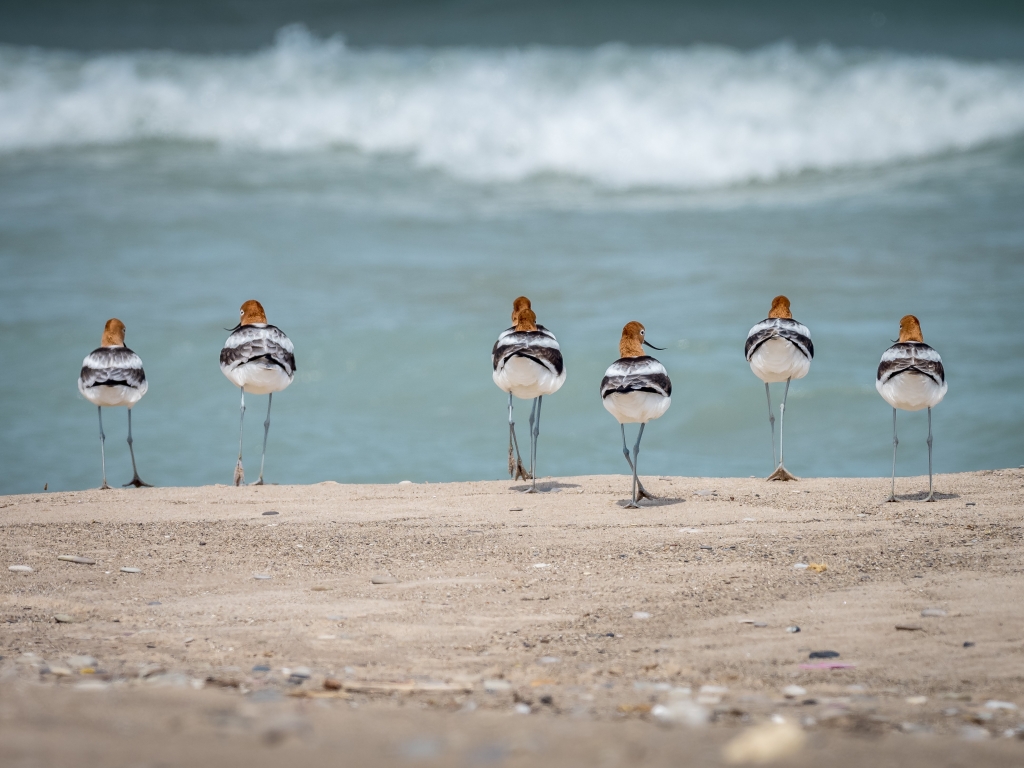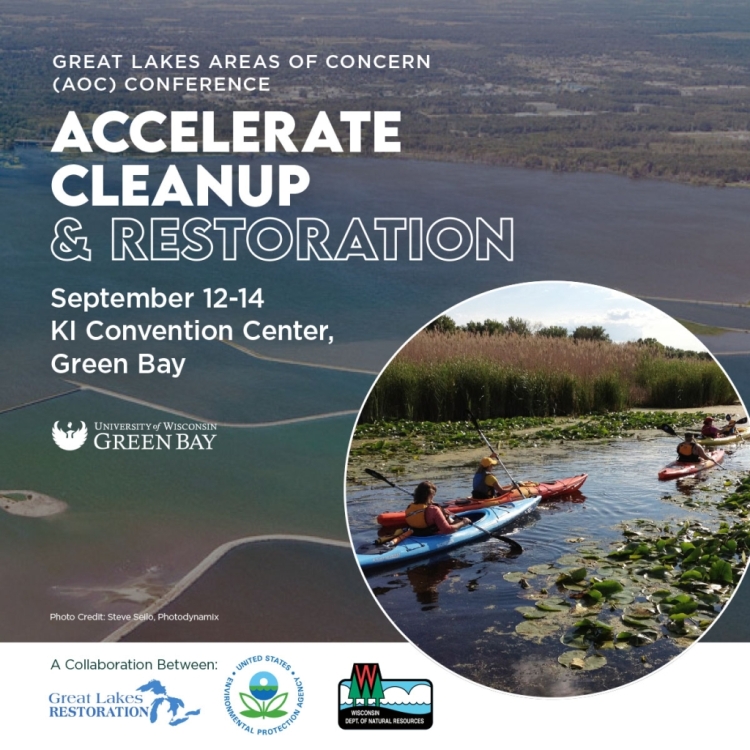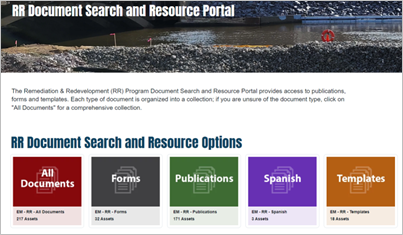EM Insight 2023 Quarter 2: April - June
Quarterly news and highlights from the Environmental Management (EM) Division
The EM Insight is a quarterly report from the Wisconsin Department of Natural Resources Environmental Management (EM) Division that profiles some of the great results that our staff, teams and partnerships have achieved. The division is pleased to present the following highlights of our work from April-June 2023.
In this edition
- PFAS Updates
- Headline News
- Community Engagement and Assistance
- Annual Awards and Awareness Campaigns
- Social Media Spotlights
PFAS Updates
New Toolkit Available To Help Local Leaders Address PFAS Contamination In Drinking Water
Earlier this year, the DNR, in partnership with Dept. of Health Services (DHS) and Wisconsin Emergency Management (WEM), released a new tool to assist community leaders and elected officials understand options for addressing per- and polyfluoroalkyl substances (PFAS) contamination in drinking water.
Wisconsin’s Community Response to PFAS in Drinking Water provides background information about PFAS in public and private drinking water, options to consider when PFAS are found and how to contact state agencies to request assistance. PFAS-impacted communities provided input on this document to ensure it is helpful for other local leaders. This resource is part of an ongoing effort to put tools and information into the hands of communities, so they are informed, prepared and empowered to act if PFAS are detected.
Headline News
DNR Celebrates Air Quality Improvements, Accomplishments During Clean Air Month
The Wisconsin Department of Natural Resources (DNR) celebrated Clean Air Month in May by highlighting the clean air accomplishments of the last 20 years, including the improvement in overall air quality in Wisconsin.
“We’ve made great air quality progress in much of the state, but more challenges lie ahead,” said Gail Good, DNR Air Management Program Director. “Together with our fellow agencies and research partners, the DNR is making great strides in research, monitoring, policy-making and outreach to better understand and make continued progress toward our air quality goals.”
The Air Management Program was also featured in the Spring issue of Wisconsin Natural Resources Magazine. The article, titled “Air Time,” highlights some of Wisconsin’s air quality success stories while also explaining challenges, like ozone transport, and the efforts being made to address them.
Following Clean Air Month, Wisconsin experienced several significant wildfire smoke and ozone events. The Air Program is examining the data and there will be more to come on how these events impact Wisconsin.
The DNR Releases Water Withdrawal Report And New StoryMap Showcasing Wisconsin’s Water Use
The 2021 Water Withdrawal Report was recently released by the Drinking Water and Groundwater Program. Since the onset of the Great Lakes Compact, Wisconsin has required water users to register and annually report on any surface water or groundwater withdrawals with pumping capacity of 100,000 gallons per day. With this data, the DNR can look at trends in water use to help balance the sustainability of our aquifers and the water resources that depend on them.
In conjunction with the 2021 Water Withdrawal Report, the DNR also released its Decade of Wisconsin Water Withdrawals StoryMap. This user interface allows the public to navigate through maps, data, photos and basic information about how, when and where water is withdrawn throughout Wisconsin. In the first week the StoryMap was available, 2,169 people explored information about Wisconsin’s water usage.
The Annual Drinking Water Report For Wisconsin Public Water Systems Now Available
The DNR’s Drinking Water and Groundwater Program recently published the 2022 Annual Drinking Water Report. This year’s report highlights cooperative work between the DNR and federal, state and local partners to effectively manage Wisconsin’s drinking water resources. Other features include Bipartisan Infrastructure Law (BIL) funding, the American Rescue Plan Act (ARPA) Well Compensation Grant Program, environmental justice commitment, community success stories, contaminant solutions, PFAS challenges and much more!
New this year is an interactive map to complement the annual report. It displays projects around the state funded through the Safe Drinking Water Loan Program and the Private Lead Service Line Replacement Program.
Prevent Recycling Fires By Safely Disposing Of Used Batteries
The DNR issued a press release in June on used battery safety and disposal in response to recent major fires at recycling facilities in Whitewater, Milwaukee and Columbia County, and multiple smaller-scale fires in trash/recycling collection trucks and facilities. The release included reminders not to put rechargeable batteries or battery-containing devices in recycling or trash bins or containers and offered several options for safe management of these materials.
The DNR Teams With Boaters And Anglers To Protect Wisconsin’s Waters
The DNR took to the water during the annual Drain Campaign event in June to share aquatic invasive species (AIS) minimization tips with boaters and anglers. The agency offered simple but effective tips like always draining livewells and fish buckets before leaving boat launches and fishing across access points.
Draining is one of the important steps to help prevent the spread of AIS, limiting the spread of microscopic larvae of zebra mussels and of diseases. In addition to draining livewells and buckets, boaters should pull the drain plugs on their boat and tip their motor straight up and down to drain any local water before securing it for the drive ahead.
All boaters and anglers should familiarize themselves with AIS prevention steps, required by Wisconsin state law, to help prevent the spread of aquatic invasive species in our waters. To learn more about invasive species and their impacts on Wisconsin’s waters and economy, visit the DNR’s invasive species webpage.
Community Engagement and Assistance
Continuous Disinfection Guidance Posted
The Drinking Water and Groundwater Program recently finished two new guidance documents to help with consistent implementation of the Revised Total Coliform Rule (RTCR) at municipal systems that do not continuously disinfect year-round. The guidance documents, linked below, are also posted on the DNR’s Drinking Water and Groundwater Guidance webpage.
Thank you to those who submitted comments during the public comment period, in April 2023, and the stakeholders who met with DNR staff to discuss their comments and concerns. The feedback received was very helpful in shaping the final guidance.
Registration Now Open For Great Lakes Areas Of Concern Regional Conference In Green Bay, Sept. 12-14
Join us at the Great Lakes Areas of Concern Conference, taking place in Green Bay on Sept. 12-14, 2023. This event brings together federal, tribal, state and local agency officials, as well as businesses, university researchers, community organizations and citizen-led groups from across the entire eight-state Great Lakes region. Attendees explore current issues and discuss efforts to accelerate pollution cleanup and restoration of the largest system of fresh surface water in the world. Participants also build connections and share ideas about advancing the goals outlined in the Great Lakes Restoration Initiative Action Plan.
Activities to help participants learn, share and connect include tours, introductory workshops, a wide array of presentations, exhibits, poster sessions and fun networking opportunities. For example, tour fish and wildlife habitat restoration projects in the recently delisted Lower Menominee River and ongoing projects in the Lower Green Bay and Fox River Area of Concern. Another tour will show how efforts to address pollution and improve water quality in the Lower Green Bay and Fox River Area of Concern are helping Green Bay communities reconnect with the waterfront and revitalize the economy.
The conference is co-sponsored by the U.S. Environmental Protection Agency (EPA)’s Great Lakes National Program Office and Wisconsin Department of Natural Resources (DNR)’s Office of Great Waters, in collaboration with the University of Wisconsin - Green Bay. Register by Sept. 6. To learn more, visit the Great Lakes Areas of Concern Conference website: www.uwgb.edu/aoc.
New Tool For Locating Remediation And Redevelopment (RR) Program Guidance And Publications
The Department of Natural Resources (DNR) Remediation And Redevelopment (RR) Program Guidance And Publication Search Tool has a new look and web address, https://widnr.widencollective.com/portals/n3gjtfty/RRDocumentSearchPortal.
The update to the search tool includes a visual interface featuring publications, templates and forms, as searchable collections, as well as a collection of documents that are available in Spanish. Multiple documents can be selected and downloaded at once and documents can be viewed in the web browser. Traditional search tools (i.e., general search and by subject/keyword) are available in each collection.
EPA Proposes Ban On All Consumer And Many Commercial Uses of Perchloroethylene
The DNR's Small Business Environmental Assistance Program (SBEAP) is tracking U.S. EPA's proposed rule to ban all consumer uses and many commercial uses of perchloroethylene (PCE), a chemical known to cause serious health risks such as neurotoxicity and cancer.
The proposed ban comes under the Toxic Substances Control Act (TSCA), where EPA evaluates the safety of existing chemicals via a three-stage process: prioritization, risk evaluation, and risk management. EPA determined that PCE presents unreasonable risk to health, driven by risks associated with exposure to the chemical by workers, occupational non-users (e.g., workers nearby but not in direct contact with this chemical), consumers and those in close proximity to a consumer use.
Businesses would by impacted in two ways by the proposed ban on PCE: manufacturing, processing and distribution of PCE for all consumer uses and many industrial and commercial uses will largely be phased out in two years; and use at dry cleaners will be phased out in 10 years to allow for replacement of equipment.
EPA is proposing a workplace chemical protection program with a strict inhalation exposure limit and requirements to prevent skin exposure to ensure protection for workers in industrial manufacturing, industrial processing and other uses of PCE that would not be prohibited.
SBEAP has been in touch with the Wisconsin Fabricare Institute, the state-level dry cleaners association, about the potential impact on their industry. Once the rule is final, SBEAP will conduct outreach to other potentially impacted businesses in Wisconsin.
Annual Awards and Awareness Campaigns
Annual Air, Air Everywhere Poetry Contest: DNR Announces Winners
The Air Management Program held its annual poetry contest this spring to celebrate Clean Air Month. Third, fourth and fifth grade students across Wisconsin took part in, virtually and in classrooms, an activity from DNR’s Air, Air Everywhere activity guide, and wrote poems and riddles on what they learned about Wisconsin’s air.
Elin Chance of Swallow School in Hartland, Wisconsin took first place in this year’s competition. Here is the winning poem:
Air is…
Air is the sweet taste I find in the breeze,
Air is the whipping wind never at ease,
Air is the one with a cool, clear touch,
Air is the element that is more than enough.
Air is the one that keeps us alive,
Air is what lets us thrive,
Air is what we need,
Air is what we lead.
Air is what makes us live
It is important for us to give
All the hope we have
It lets us breathe
We shall never let it leave.
The air is everything.
To view the runners-up from Hope Williamson and Sara Jo Butterfield, visit the poetry contest webpage.
Social Media Spotlights
-
April 15: Reducing Food Waste At Home Facebook
-
May 9: Celebrate Drinking Water Week Facebook
-
May 31: 2022 Wisconsin Air Quality Trends Report and StoryMap Facebook




